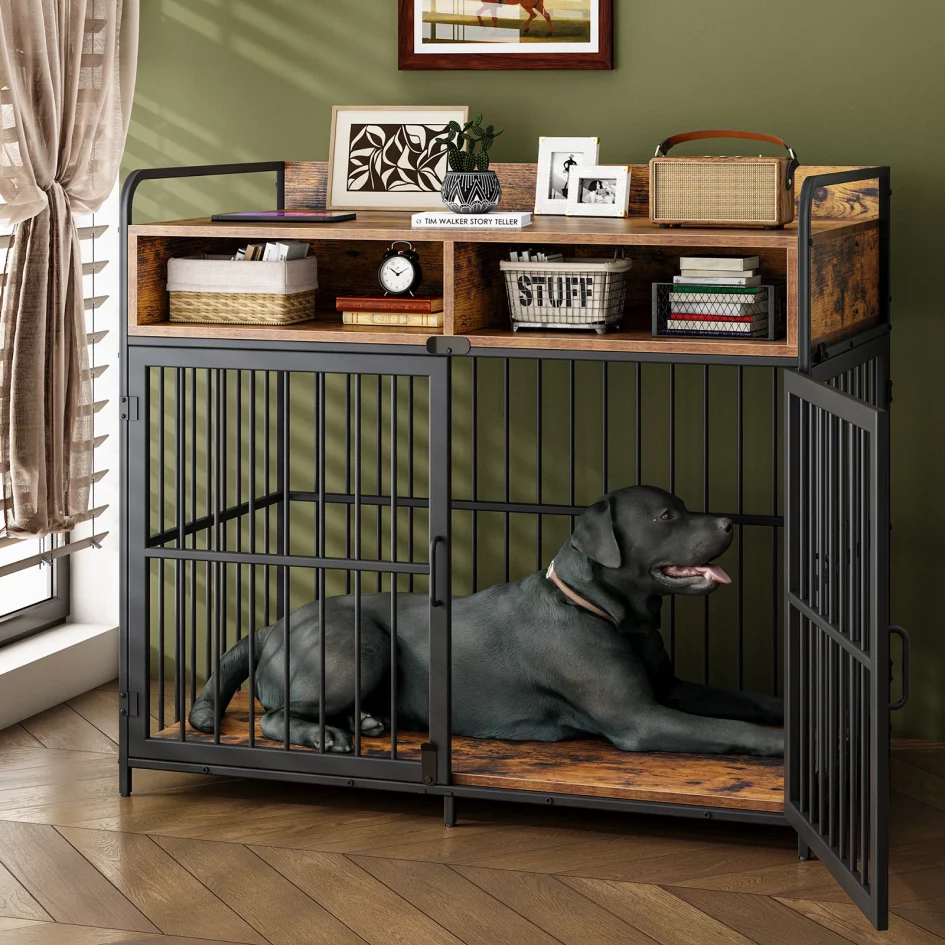Buying a dog crate might seem like a simple decision — until you start comparing models, prices, and features. Suddenly, the market feels overwhelming. With prices ranging from $30 to well over $1,000, how do you know what’s actually worth your money?
This guide dives into the real meaning of dog crate value, helping you look beyond price tags and focus on what really matters: safety, comfort, and longevity.
Let’s break down the key factors that determine crate value — and how to make sure you’re getting the best deal, regardless of your budget.
What Is “Value” in a Dog Crate?
Value doesn’t just mean the cheapest option. It’s about what you get for the price you pay. A $400 crate might actually deliver better value than a $100 one if it lasts ten years, provides superior safety, and prevents destructive behavior.
To evaluate dog crate value, consider the following:
- Durability
- Safety features
- Ease of use and assembly
- Comfort for the dog
- Portability and storage
- Long-term utility
- Warranty or service support
You’re not just buying a box — you’re investing in your dog’s well-being.
The Price Ranges and What They Typically Offer
Under $100: Entry-Level Convenience
At this level, you’ll mostly find wire or soft-sided crates. These can be great for travel, short-term use, or crate training puppies — but they often lack the sturdiness and security needed for large, active, or anxious dogs.
Pros:
- Lightweight
- Affordable
- Easy to fold and store
Cons:
- Limited durability
- Poor resistance to chewing or pushing
- Can feel flimsy or unstable
Value Verdict: Best for calm dogs or temporary use — not ideal for escape artists or long-term confinement.
$100–$300: Mid-Range Versatility
This is where you start to see upgrades in build quality. Many plastic airline crates and heavier wire models fall into this category. Some may include double-door access, divider panels, and modest reinforcement features.
Pros:
- Greater stability and build quality
- May include better latches and hardware
- Suitable for travel or moderate daily use
Cons:
- May still be vulnerable to wear and tear over time
- Limited customization options
Value Verdict: Great for most average dogs, but may still disappoint with heavy daily use.
$300–$800: Premium and Heavy-Duty Options
Here, you enter the world of high-performance crates — often made from aluminum, reinforced steel, or composite materials. These are designed to handle the demands of powerful or anxious dogs, frequent travel, or professional use (trainers, breeders, service animals).
Pros:
- Built to last for years (or decades)
- Superior impact resistance and safety
- Often crash-tested or certified
- Strong resale value
Cons:
- Higher upfront cost
- May require more space or thoughtful installation
Value Verdict: Excellent long-term investment, especially for working dogs, frequent travelers, or owners dealing with crate escape problems.
$800 and Up: Specialized or Custom Solutions
At this level, you may find crash-tested travel crates used for air transport, custom-made wood furniture crates, or high-security aluminum enclosures. These crates focus on performance, aesthetics, or extreme durability.
Pros:
- Exceptional build and attention to detail
- Often meet travel certifications
- May be visually attractive in home settings
Cons:
- Premium price
- Not always necessary for average households
Value Verdict: Worth it if you need something mission-specific — but not a requirement for every dog owner.
Hidden Costs to Consider
When evaluating crate value, don’t forget about the extras:
- Shipping fees: Some heavy-duty crates incur high freight costs.
- Accessories: Padding, crate covers, fans, and bowls can add up.
- Replacement costs: Cheaper crates may break and require frequent replacement, costing more over time.
- Safety risks: Poorly made crates can lead to injuries or escapes, which could be far more costly than the crate itself.
Real-Life Scenarios and Matching Value to Need
Let’s consider a few common situations:
New Puppy: You might want a cheaper crate while the dog is small, knowing you’ll upgrade later. But even here, think long-term. Crates with divider panels can grow with your dog and save you money in the long run.
Rescue Dog with Anxiety: Investing in a strong, escape-proof crate right away can reduce vet bills, damage to your home, and stress for both of you.
Frequent Travel: A crate that is both portable and crash-tested may come with a higher price, but if it protects your dog in an accident, the value becomes undeniable.
Strong Breed or Working Dog: Heavy-duty models such as Impact Dog Crates offer tremendous value. Built for strength and longevity, they are trusted by professionals who rely on crates daily.
Making the Right Choice: A Thoughtful Approach
To make the most informed decision:
- Define your needs clearly. Think about your dog’s size, temperament, lifestyle, and behavior patterns.
- Set a realistic budget. Remember that better materials and engineering come at a cost — but often with better long-term value.
- Read expert reviews. Sites like mydogcrates.com provide helpful breakdowns based on user experience, safety standards, and build comparisons.
- Check warranty terms. A good manufacturer will back their crate with solid support.
